Sports
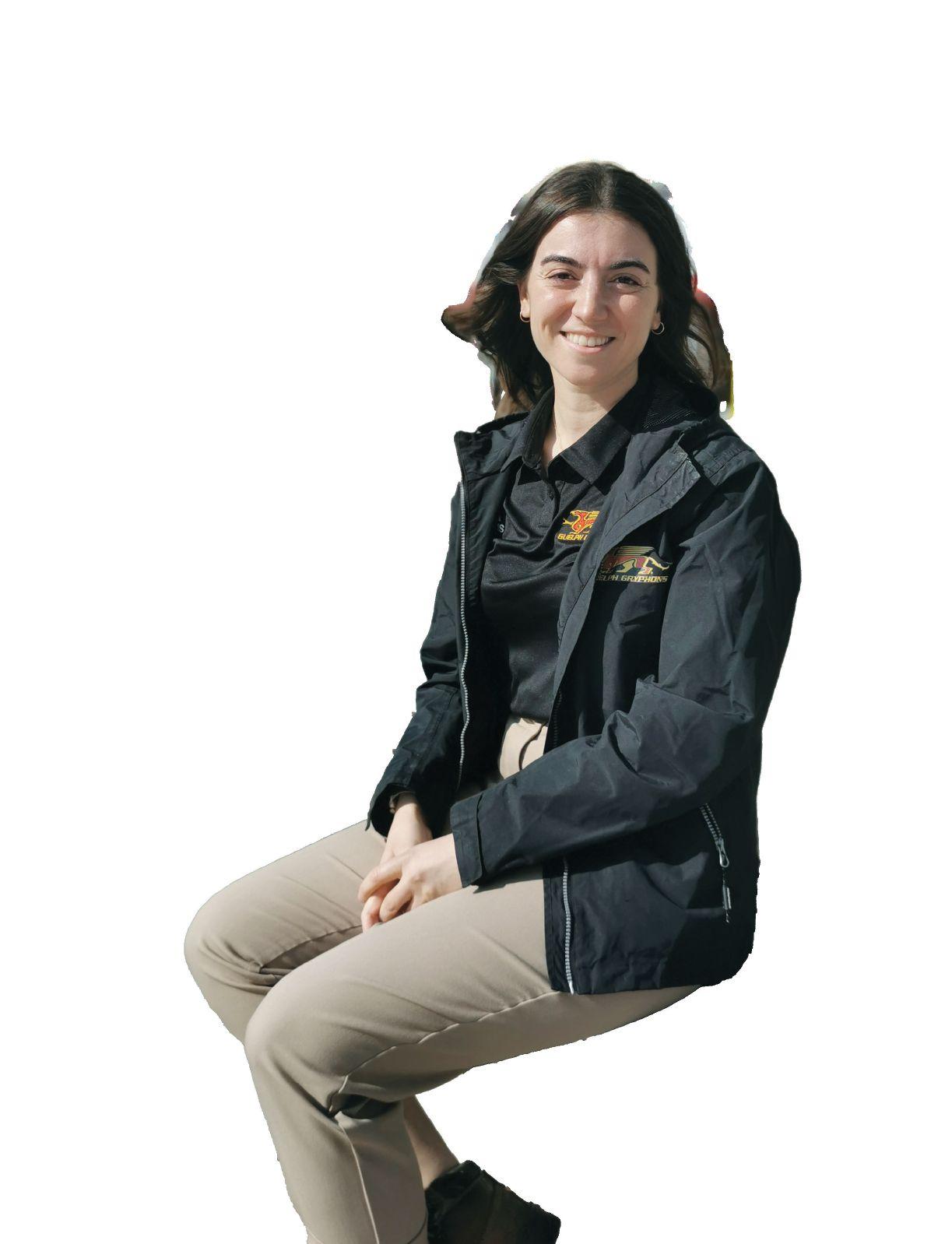
Landscaping: Compost and climate change P21
Research: Listening to plants talking P24

Sports

Landscaping: Compost and climate change P21
Research: Listening to plants talking P24

DECK WIDTH • 21"
CUTTING HEIGHT • 1 – 3.4"
GRASS CATCHER • 70 L

The RM 655 YS gas lawn mower with low-maintenance Hydrostatic Drive and variable speed adjustment is equipped to tackle demanding lawn maintenance. With a cutting width of 21”, the RM 655 YS offers fast and precise mowing. The bladebrake clutch allows the operator to disengage the mowing blade during operation, whether to remove objects from the mowing path or to empty the grass catcher, there is no need to stop and restart the engine. The Dual purpose multi-blade handles both cutting & mulching applications and ensures a precise cutting pattern. The RM 655 YS features a single point height adjustment with 7 settings from 1" to 3.4". A heightadjustable, folding mono-comfort handlebar with rubberized soft touch handle provides comfort and easy access to the 70-litre grass collection box. This includes a fill-level indicator making it easy to see when it needs to be emptied.
PRO-FLEET COMMERCIAL LANDSCAPE PROGRAM
STIHL’s Pro-Fleet Commercial Landscape Program is designed to provide commercial landscapers a volume discount on purchases of five or more landscaping power tools. Receive additional savings on STIHL battery products until June 28, 2024. Visit your STIHL Dealer today to learn about our power, performance and durability difference.


06 | In the news
Capilano’s Nick Daley named top assistant golf superintendent 24 | Research
Plants are talking: Are you listening?
COVER STORY
Canada’s leading women in turf
These leaders have left their mark in the industry and are an inspiration to others


04 | From the editor Tipping our hats to turf’s leading women
30 | Health & Safety
Workplace health & safety responsibilities
STC pioneer turns to consulting work Gorden Horsman helped Sports Turf Canada expand into Atlantic provinces

By Mike Jiggens
Last year’s recognition by Turf & Rec of some of the top women in the industry was such a success that it was important for us to keep the momentum going. However, it was decided we should turn things up a notch and fine tune our search by seeking out some of the “leading” women in turf.
That is to say that we wanted to acknowledge those who have become respected leaders and mentors within the industry in addition to their other attributes, such as their work ethic and innovation skills. There are many more women working in the industry today than there were a generation ago, and several have risen to the top of their professions where they are leading, mentoring and guiding others.
Many of their mentees also happen to be women which ensures the number of women entering the industry will continue to increase in the years to come.
We had three esteemed judges this year who sifted through the nominations to agree on five select honourees. Two of those judges – Jennifer Lemcke, CEO of The Weed Man, and Dr. Sara Stricker, communications and outreach co-ordinator at the Guelph Turfgrass Institute – were honoured last year among our top women in turf. The third judge was Morgan
Creighton, assistant superintendent at Woodside Golf Course in Airdrie, Alta. and the founder of a mentorship program that helps women entering the profession to feel at ease and not be intimidated by the fact they’re outnumbered by their male counterparts.
Together, the trio of judges selected two golf superintendents, a former assistant golf superintendent, an industry supply company sales representative and a sports turf management trainee.
Women are equally capable of performing the same tasks and filling the same managerial roles
Each of them is deserving of the honour and has made a name for herself in the industry. Interestingly, most of the nominations received for “Leading Women in Turf” were put forth by men. It’s clear that not only those who were selected but the others who were nominated have earned the respect of their male colleagues.
The concept of women working in this industry, today, seems like a non-issue. Women are equally capable of performing the same tasks and filling the same managerial roles as their male counterparts. Perhaps a decade from now – maybe sooner – we won’t even bother with acknowledging the indus-
try’s leading women. By then, it will be commonplace to have men and women working side by side with members of both genders in leadership roles.
For now, though, women working in the professional turfgrass industry are still a minority group, and it’s important to recognize these trailblazers who have opened the doors for other women to follow their lead and increase their numbers.
It’s apt to be several years from now before we may see an even balance in the male-to-female ratio of industry professionals, but the trend is underway. Women working in this industry is no longer a “novelty.”
It’s a reality and it’s here to stay.
Like last year when we honoured eight women in the industry, we learned that a career path in turf was not necessarily the initial calling of some of the women being honoured this time around. One was pursuing a degree in social work while another opted to become a personal trainer after having got a start in turf.
Regardless of where they began or whatever detour in the road that came about, the women we’re honouring this year have concurred that once they got a taste of the industry, there was nowhere else they wanted to go. The same sentiment was shared by those honoured in 2023.
The chance to work outdoors is the common denominator and seems to be the No. 1 pull in getting women interested in a career in turf.
Congratulations, all.
www.turfandrec.com
Reader Service
Print and digital subscription inquiries or changes, please contact Angelita Potal, Customer Service Tel: (416) 510-5113 apotal@annexbusinessmedia.com
Mail: 111 Gordon Baker Rd., Suite 400 Toronto, ON M2H 3R1
Editor Mike Jiggens mjiggens@annexbusinessmedia.com
Advertising Manager Rebecca Lewis 519-400-0322 rlewis@annexbusinessmedia.com
Account Coordinator
Trish Ramsay 416-510-6760 tramsay@annexbusinessmedia.com
Audience Development Manager
Anita Madden Tel: (416) 510-5183 amadden@annexbusinessmedia.com
Group Publisher Anne Beswick 416-410-5248 abeswick@annexbusinessmedia.com
President/COO Scott Jamieson sjamieson@annexbusinessmedia.com
Printed in Canada ISSN 1186-0170
PUBLICATION MAIL AGREEMENT #40065710
SUBSCRIPTION RATES
Published 7 times a year – Jan/Feb, March, Apr/May, June/July, Aug/Sept, October, Nov/Dec
Canada – 1 year $35.70 CDN; 2 year $45.90 CDN; 3 years $56.61 CDN (plus applicable taxes
USA – 1 year $48.96 CDN HST 86717 2652 RT0001
Occasionally, Turf and Recreation will mail information on behalf of industry related groups whose products and services we believe may be of interest to you. If you prefer not to receive this information, please contact our circulation department in any of the four ways listed above.
Annex Privacy Office
privacy@annexbusinessmedia.com
Tel: 800.668.2374
No part of the editorial content of this publication may be reprinted without the publisher’s written permission © 2024 Annex Business Media. All rights reserved. Opinions expressed in this magazine are not necessarily those of the editor or the publisher. No liability is assumed for errors or omissions.
All advertising is subject to the publisher’s approval. Such approval does not imply any endorsement of the products or services advertised. Publisher reserves the right to refuse advertising that does not meet the standards of the publication.




Nick Daley, senior assistant superintendent at the Capilano Golf and Country Club in West Vancouver, has been named CGSA/ Toro assistant superintendent of the year for 2023.
The announcement was made by the Canadian Golf Superintendents Association and The Toro Company, which co-sponsor the award.
The award recognizes the specific achievements of a golf course assistant superintendent whose performance and contributions to the success of the facility go beyond those that would normally be expected. The award is presented to an individual who has contributed to his or her golf facility in a

significant way and who has demonstrated professionalism, leadership, innovation and a team approach in their work.
Daley has been a CGSA member since 2019 and he has been in the golf course industry since 2013. He is going into his fifth season with the Capilano Golf and Country Club. Prior to Capilano, he was second assistant superintendent from 2017-2018 at Nicklaus North Golf Course. He graduated with his Bachelor of Landscape Architecture degree with honours from the University of Canberra, Australia in 2009 and has also completed online certificates with Ohio State University (golf course manage-


ment) and Penn State University (turf management).
Stuart Sheridan, Capilano superintendent, nominated Daley for this award. Daley has been Sheridan’s right-hand man since he was hired in 2019. Sheridan promoted him to assistant superintendent after stepping into the superintendent position and then to senior assistant superintendent in 2021.
“I needed to have someone I could trust on-site at all times,” Sheridan said. “Nick continues to push himself to develop as a person, leader, and industry professional.”



Time is now to book housing for October’s Equip Expo
Housing blocks have opened for industry members wishing to attend the 2024 Equip Expo show in Louisville, Ky. Louisville Tourism is the official housing provider for Equip Expo.
Last year, Equip attracted more than 27,000 attendees and landscape contractor registrations were up by 20 per cent.
“With the ongoing growth of Equip,
expect hotels and other housing to fill up fast,” Kris Kiser, president of the Outdoor Power Equipment Institute, said. “Book today, especially if you want to be close to the venue. Seriously.”
He added that last year’s record, sell-out show had a waiting list for exhibit space, and hinted 2024 could break another record.
In addition to the Kentucky Exposition Center’s 30-acre Outdoor Demo Yard, which showcases the latest equipment and expansive indoor exhibit space showing off the latest innovations in the industry, the footprint of Equip and its offerings are evolving.
Registration for Equip 2024 is open, and winter pricing for attendee registration is $25 for a limited time. Hardscape North America continues to co-locate with the show. Visit www. equipexposition.com for more details.
The cost to repair damages to the Osoyoos (B.C.) Golf Club are expected to be significant following an act of vandalism in February.
Locks were cut at the property which allowed trucks to enter and carve up fairways. A member of the club witnessed the act, reporting to police that a white truck and a black truck were involved.
Conditions at the golf course are soft at this time of year, and the vandals caused extensive damage by driving “donuts.”
The club’s general manager said the timing of the vandalism has coincided with efforts to have the course ready for an early March opening.

These leaders have left their mark in the industry and are an inspiration to others
By Mike Jiggens
The male-to-female ratio of professionals working in the Canadian turf and grounds maintenance industry is still heavily tilted toward men, but the pendulum continues to swing more in the opposite direction. It’s unlikely the industry will realize an even gender balance anytime soon, but a trend toward that possibility is happening.
Much of that can be attributed to today’s digital era in which information can be obtained and shared instantaneously. The Internet allows us to learn about any career field through a few keystrokes and to be able to network with others who are more than willing to provide information about their own experiences.
Not only has the number of women working in the turf industry increased significantly since the turn of the millennium, so, too, has the number of women who have become leaders in their fields. There are many more women today working as golf course superintendents or assistants than there were a generation ago. The same can be said for women who own their own landscaping businesses and lawn care
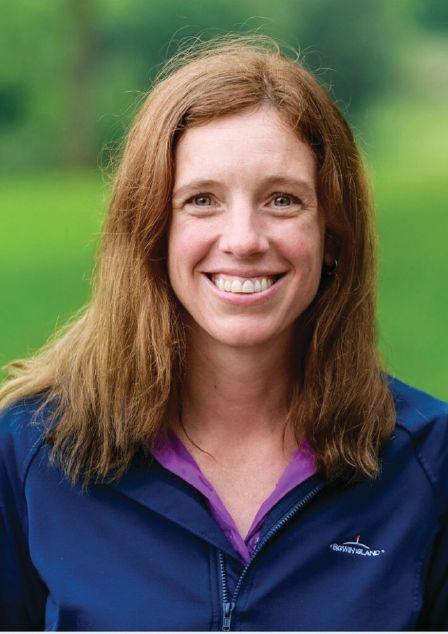
or
within their municipal parks and recreation departments. Others, too, have gravitated toward the field of academics or who have become sales representatives with industry supply companies.
Turf & Rec began a quest to identify some of Canada’s “leading” women in turf – those who are not only actively working in this still male-dominated industry, but who have become leaders in their field and have become an inspiration for other women to want to pursue a career in the industry. The “leading
women in turf” our panel of judges selected are also eager to mentor other women and have climbed their respective ladders through hard work, innovation skills, professional achievement and community involvement.
The panel of judges who selected our first crop of leading women in turf are, themselves, highly respected in their field, including two who were among our chosen honourees last year. Our panel of judges were:
• Morgan Creighton, assistant superintendent at Woodside Golf Course in Airdrie, Alta., who launched a mentorship program in 2019 to help women gain a sense of confidence while working in the industry.
• Jennifer Lemcke, CEO of The Weed Man
• Dr. Sara Stricker, communications co-ordinator at the Guelph Turfgrass Institute.
The trio recognized five women from among the nominations forwarded by our readers. Together, they selected:
• Carol Turner, superintendent at Bigwin Island Golf Club in Baysville, Ont.
• Genna Villella, facility operations management trainee with the University of Guelph’s department of athletics
• Karen Rumohr, sales representative for Shuttle 14 Inc. in Edmonton
• Kim Best, superintendent at Eagle Creek Golf Club in Ottawa
• Lesley Thomas, former assistant
superintendent at the Scarborough Golf & Country Club in Toronto
Carol Turner
Although Carol Turner got her first taste of working in the golf industry almost 20 years ago, the journey that got her to where she is today could hardly be considered conventional. She first got her feet wet in golf as a 19-year-old, working on the grounds crew at Bigwin Island, but left the industry soon afterward to work as a landscaper and later a personal trainer.
A native of Huntsville in Ontario’s Muskoka region, Turner realized the personal training job necessitated a move to Toronto.
“I always drove past this golf course every day and was really getting burned out from personal training,” she said, acknowledging her training duties often meant working split shifts and getting paid only when actively training someone.
Turner sought a return to golf – fueled by her daily drives past a golf course while
commuting to her personal training job –and landed a labourer position at the Lambton Golf & Country Club which was closer to her Toronto residence. She also worked at other local courses, “and decided to take it more seriously,” figuring a career in golf was perhaps her destined calling.
She said her tenure at the Ladies’ Golf Club of Toronto, working under superintendent John McLinden, proved to be the springboard toward her higher ambitions in golf. During her four years at the Ladies’ club, she obtained her spray licence and became second assistant while also taking the turf managers’ short course at the University of Guelph.
Turner learned an assistant superintendent position had become available at Bigwin Island and applied for the job, knowing it also presented an opportunity for her to return to her hometown area. The club “took a chance” on her and offered her the position.
Two years into her new position in 2022 as Bigwin Island’s assistant superintend-
24_000933_Turf_and_Rec_MAR_CN Mod: January 29, 2024 4:29 PM Print: 02/13/24 1:33:49 PM page 1 v7




ent, another chance to climb the ladder presented itself. Superintendent Kevin Schultz – who Turner credits for teaching her people management skills – opted to retire, but she figured the position might go to an outside hire.
“But they went with me,” she said. “I’ve had a very good two years – great staff, great location, wonderful membership.”
Turner said her career has included many highlights, including her participation in the Bayer Women in Golf program in 2019, landing the assistant superintendent position at Bigwin Island and subsequently graduating to her “dream job” of superintendent which was “beyond my dreams. I can’t imagine being somewhere better.”
There were challenges along the way, however. She noted there were several industry events she attended in the past where she was the only woman present, leaving her feeling ill at ease.
“It’s very intimidating, so that was definitely a challenge at first.”

Turner hopes to eventually become a board member of some industry associations and provide some diversity.
Women who think they can’t reach the same level of success may want to heed her advice: “There’s no reason why you can’t be a superintendent and do other things. You should always be growing and challenging yourself.”
A career in the turf industry wasn’t what Genna Villella initially envisioned for herself. While pursuing her undergrad studies in social work at the University of Guelph, prior to the COVID-19 pandemic, she was helping with some disassembly work one day at the university’s fieldhouse under the supervision of Cam Lawrie, facilities supervisor for outdoor
sports fields, when he offered her a part-time job.
Villella began working at the campus in 2016, becoming a part-time supervisory student-manager with an enhanced focus on turf and grounds maintenance, “and I really just fell in love with it.”
When the pandemic hit, she left the campus and returned home where she focused on completing her master’s degree in social work. By 2021, a facility operations management trainee position opened at the university which forced her to make a critical decision.
“I thought it was something that fit well. I knew that I needed a job – a full-time position – and with everything that was happening with the pandemic, I really didn’t know how that was going to look like in social work for me, so I went with the

safer route.”
Now that she’s currently into the third year of her new position, she figures it was the path she was destined to take.
“I figure it would be hard to leave something that I love do-
Fleet Week Promotions only valid at participating Shindaiwa Dealers. Check in-store for full details.
BROTHERS TWO SMALL ENGINES INC EDGE EQUIPMENT LTD
THE LAWNMOWER HOSPITAL
FUTURE AG INC.
TERRY’S POWER EQUIPMENT SALES . CHILLIWACK OUTDOOR POWER EQUIP PILON TOOL RENTALS 1972
ISLAND SAW & TURF SAVOY EQUIPMENT MILL BAY POWER PRODUCTS LTD
AJAC’S EQUIPMENT (1982) INC KOOTENAY INDUSTRIAL
HI-WAY POWER AND MARINE LTD ARCOM POWER EQUIPMENT INC. FRASER VALLEY EQUIPMENT ARROW EQUIPMENT LTD WEST COAST GARDENERS CO-OP SAVOY EQUIPMENT
G&A RENTALS LTD CUMMINGS SMALL ENGINE SERVICE
EASTERN POWERSPORTS CROSS SMALL ENGINE REPAIR
DICKSON EQUIPMENT INC
403-248-0878
403-279-2244
780-455-3343
780-437-1851
403-343-6101
250-287-9755
604-792-4410
250-338-5361
250-748-4341
250-868-1010
250-743-7994
250-754-1931
250-352-5301
250-248-3621
604-533-0081
604-590-1433
604-987-9926
604-430-4117
250-545-0627
204-467-7368 204-237-4911
902-660-1228 902-543-9683
905-775-7101
519-644-0670
905-331-5040
B&T MACFARLANE
ALPINE LAWN & GARDEN EQUIPMENT
LARRY’S RENTALL INC ECHO RENTAL & SUPPLY
SUDBURY SMALL ENGINE
KOOY BROS. LAWN EQUIPMENT LTD M.R. BLAIS SALES & SERVICE INC
WICKHAM NURSERYLAND
VESEY’S SEEDS LTD
LOCATION LAUZON AMOS INC. EQUIPEMENT BEAUMONT INCORPORE
SPECIALITE DE MOTEURS BERTHIER LES EQUIPEMENTS ACMAT INC
MINI MOTEURS M.P. INC.
ROUTHIER EQUIPEMENTS
PETITS MOTEURS COTE ENR
MINI MECANIQUE GRANBY
EQUIPEMENTS GRENVILLE 2016 INC
LOCATION D’EQUIPEMENTS LAVAL FAUTEUX MINI MOTEUR 2010 INC
LES EQUIP.CLARENCE LAPOINTE
G.H.L. DISTRIBUTION INC.
LAVOIE 2TEMPS 4 TEMPS INC.
LOCATION ROUANDA PRO-TEC
LA MONTAGNE SPORT GSS INC
613-225-0555 416-292-8900
905-984-5522
705-673-9500
ing and love being a part of to do something that I’m not sure of.”
Shortly into her new career, Villella found herself temporarily tasked with an experience she cites as one of the most challenging she has so far faced.
819-732-2652 418-835-6211 418-259-7767 418-285-4489 418-623-2512 819-849-4896 450-266-3423 450-776-2622 819-242-3306 450-622-7422 450-646-6976 418-562-1031
450-467-5459
819-623-9623

SERVICE MECANIQUE MOBILE ENR. CENTRE MULTI-PIECES INC LES 3 FRERES EQUIPEMENT BRADFORD RENTAL SALES & SERVCE
905-628-3055 905-822-4211 905-569-2055
PETITS MOTEURS FLEURIMONT INC.
705-564-9772 416-242-3513 613-443-1230 SAVE 5% ON ALL GAS-POWERED UNITS DURING FLEET WEEK!
819-797-1331 819-539-5235 819-563-0050 819-564-6623 450-743-5344 450-839-2179


MARCH 18TH – 24TH
British

Ontario







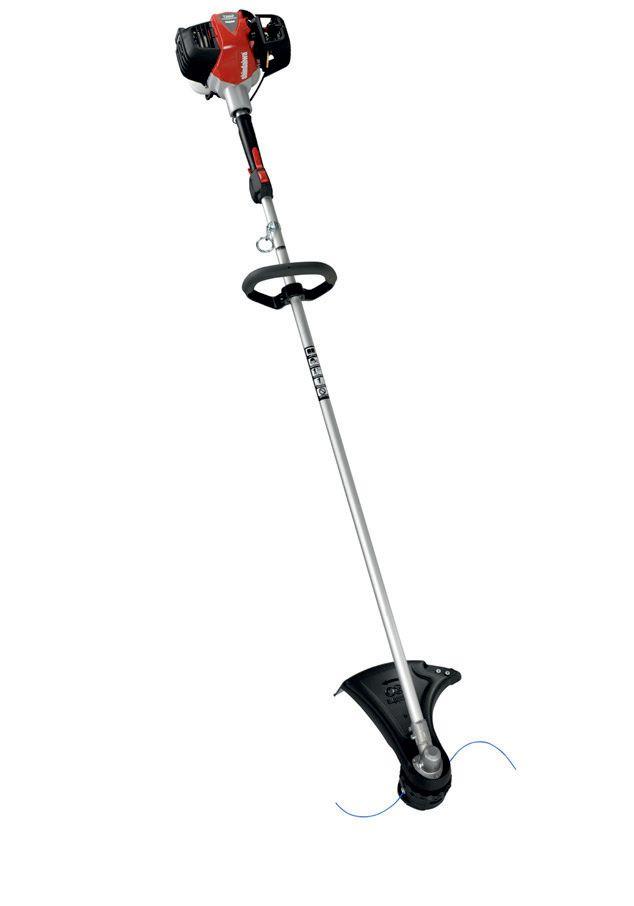
‘You should always be growing and challenging yourself’
She covered for a few months the parental leave of the university’s supervisor of outdoor sports fields but had much more knowledge at the time about managing artificial turf than natural grass fields – for which there were several on campus.
“I think managing those was the most difficult for me and still is.”
Villella has taken several courses and attended conferences for artificial turf management and considers being part of two artificial turf replacement projects at the university among her career highlights.
“Our fields are so specific to the sports that we cater to, and we want to make sure that our athletes thrive and are safe when they’re playing and it’s a comfortable field for them to be on. I love being part of keeping that up and doing the maintenance on it and making sure they are getting everything out of the experience as an athlete here.”
As a management trainee, Villella has had a variety of experiences, including the supervision of events and field facilities, but said she’d one day like to become events supervisor for outdoor sports fields, “and still be able to use some of that experience I got in my master’s in social work to create an environment where students and athletes can really thrive being outside in sport and using our facilities.”
She said working alongside men has been a mostly positive experience.
“When I was taking over for a colleague, some of the exter-
nal vendors who don’t necessarily know who I am and don’t necessarily know what I’m capable of – that’s where I definitely had some issues in the past.”
Such experiences didn’t occur often, she said, adding she believes women are becoming more relevant in the turf industry.
“It’s definitely been a challenging road and something that I never thought I’d be a part of. That comes with its challenges because I want to learn more, and I seriously feel like I’m a lifelong student because it’s so interesting and there’s so much that goes into it.”
Karen Rumohr
After a long and rewarding career in golf as both an assistant superintendent and superintendent, Karen Rumohr recently moved over to the supplier side of the industry. Late in 2023, she joined the team at Edmonton-based Shuttle 14 Inc. as a plant nutrition specialist.
“It was an opportunity that

presented itself some time ago, and I sort of laughed it off at that point because I loved being a superintendent and I loved the turf side of the business and being on the course every day,” she said.
But, she added, balancing her professional life with that of her personal life had always been a challenge, and when a second opportunity for a change in career presented itself, she jumped at the chance.
“My work life wasn’t balancing with my home life.”
Rumohr said Shuttle 14 is relatively new to the industry and currently serves customers in Alberta and British Columbia, yet the company plans to eventually branch out to the rest of Western Canada and eastward. She said her goal with the company is to take on a leadership role in either training or sales management.
“My goal now is to help to foster anybody that comes on board with Shuttle 14 in the future.”
Rumohr honed her skills in agronomy during a long career in golf which began while attending university. She found herself at a rural nine-hole course in eastern Alberta and having plenty of questions for its superintendent.
“He set me on a path of looking at turf as a career.”
After finishing her degree, she worked the summer at a golf course in Edmonton before being awarded an assistant superintendent’s position the following spring at Pioneer Meadows Golf Course in the city. Rumohr worked nine years at Pioneer Meadows before moving to the Edmonton Petroleum Golf &
Country Club, “where I really grew my turf skills set and my management style.”
Rumohr completed 10 seasons at the Petroleum Club before landing the head superintendent’s position at Airdrie’s Woodside Golf Club where she worked for three years before making the transition to the golf course supplier sector.
The lessons she learned as an assistant superintendent and superintendent about managing people are expected to come in handy in her new role.
“As far as managing people, I’ve never really struggled too much with any team members or crews I’ve ever had.”
Rumohr reflects upon her career in golf with pride, noting such achievements as being named CGSA assistant superintendent of the year and earning her accredited golf course superintendent designation.
“Becoming a superintendent was something that I worked towards for 20 years. That was a big check on the list.”
She also cites the networking opportunities she’s been afforded over the years as another career highlight.
“Any of the relationships I’ve forged over the years have always been a highlight for me.”
Rumohr said there were “relatively few” female golf superintendents in Canada when she first broke into the profession, but things have since changed, she observed, noting the growing diversity in the industry “is never a bad thing.”
There’s still a long way to go, she added, “but the fact that we can attract more women to this industry will only help. Getting those lead hands and getting those crew members who are interested in the industry, or assistant super-
Equipped with Kawasaki® or Kohler® engines.
Select models equipped with the next-generation RED Technology.
UltraCut™ Series 6 deck with 52-, 60- or 72inch cutting widths. Rear discharge is also available in 60- or 72-inch cutting widths.
Heavy-duty canister air filtration system.
Two Exmark® exclusive Parker unitized pump and wheel motor systems with no hoses.
Ground speeds up to 11.5 mph.





intendents to continue to build relationships and continue to move toward those leadership roles that they want is paramount.”
Lesley Thomas has spent her entire professional career at the same golf club. This March would have marked her 35th anni-
versary at the Scarboro Golf & Country Club. Unfortunately, departmental restructuring late in 2023 led to the elimination of her job.
Thomas says she’s not ready to give up on working in the golf industry. Now that she’s a “free agent,” she said she’s open to working in a non-private country club setting or at a course outside of the Toronto area.
Despite the loss of her position as an assistant superintendent at Scarboro, she said she enjoyed her climb up the ladder and her list of accomplishments along the way.
She broke into the industry while still in high school, working as a seasonal labourer for about six years. Over the years, she became a lead hand, a crew leader and a weekend supervisor.
A second assistant position eventually opened, beginning a new chapter in her long career.
Over the years, she worked for three “amazing” superintendents who each taught her a different set of skills.
Working under Dennis Pellrene, who
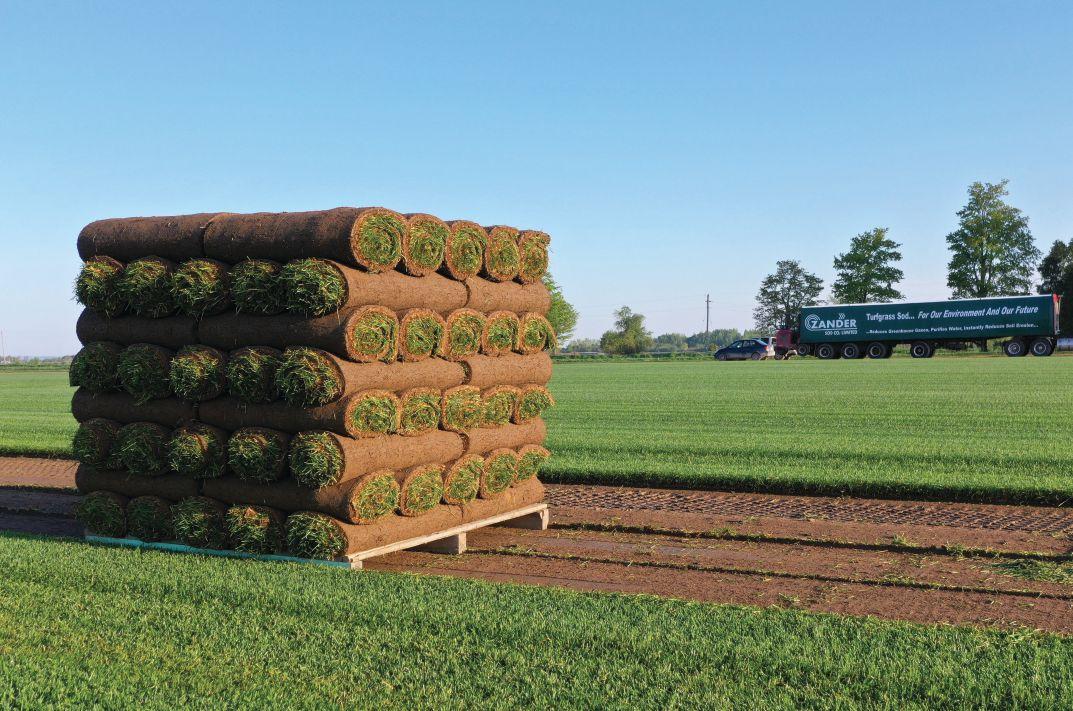
eventually moved on to the Capilano Golf & Country Club in West Vancouver before retiring from the industry, Thomas learned about construction and equipment operation.
“It was still just a summer job I had at the time with Dennis for four years.”
The second superintendent she worked under was the late Keith Rasmus who gave Thomas her second assistant position.
“He liked my work ethic and my ability to lead by example.”
Rasmus also enrolled her in the University of Guelph’s turf manager’s short course which led to further upgrading with Cornell University’s and Michigan State’s short courses.
“It’s really important to continue to upgrade and get more information,” she said, adding those opportunities inspired her to become more serious about her position at the club.
Under Bill Gilkes, Thomas was given more leeway and became his senior assistant in 2007 at a time when golf courses were making more of a positive environmental impact.
She adopted an environmental leadership role and helped Scarboro earn its Audubon co-operative sanctuary certification.
During the process, she led local school students in field trips to the golf course to learn more about Scarboro’s stewardship initiatives.
Thomas earned a conservation award just prior to the COVID-19 pandemic for her efforts in chronicling a tree-planting program at the golf course. Acorns from an old red oak tree on the property – estimated to be about 180 years old – were planted, and she kept club members abreast of new developments through regular social media postings.
Other career highlights include being part of the Women in Turfgrass Management program, which Thomas described as an “awesome” experience and being part of a similarly themed program sponsored by Envu.
“That’s a highlight for me, just to see that movement happening.”
Thomas attributes the rise of women in the industry to such programs that are tailored toward boosting female opportunities and the fact that through social media
and the Internet women can learn more about the profession.
“Young girls are able to see women doing these jobs, and I think it’s getting more spoken about.”
She said she believes men are more accepting of women today than they were generations ago, no matter what position women might hold in the turf industry.
“Women are different from men. We have different strengths, but we can do a lot more than what they thought 20 years ago.”
Kim Best’s entry into the turf industry came as a summer job while she was studying at the University of Ottawa. At the time, she thought it would be difficult to find work, figuring her hearing impairment might be an obstacle.
But her interest in science and her fascination with golf course work helped to steer her in the right direction.
“I really liked science growing up,” she said. “That helped as well.”
In fact, Best said she found applying plant science to golf course maintenance was “fun.”
Further studies at the University of Guelph enabled her to acquire her spray licence which qualified her as a spray technician and as a second assistant. She enhanced her academic standing through an online course in advanced golf course management through Ohio State University.
Best landed her initial assistant’s job at Amberwood Village Golf & Country Club

near Ottawa, where she worked for a couple of years, before moving on to the Camelot Golf & Country Club in Ottawa as an assistant superintendent.
An opening for an assistant’s position at Eagle Creek Golf Club in Ottawa eventually presented itself, and Best was keen to snare the job as it meant working closer to home. Following only a couple of months on the job, Eagle Creek’s superintendent moved on, and Best was awarded the position which she’s held since 2021.
Best has already noted a personal career highlight since becoming the club’s superintendent. Eagle Creek was the host venue for a CPGA Tour stop – the Commissionaires Ottawa Open – last July, and the same tournament is returning this summer. She said that having that initial event under her belt, she’s better prepared for being the host superintendent a second time.
“I learned what needed to be done and what didn’t, how many people I need, maintaining the green speed and moisture control – with lots of hand watering and night watering – and just trying to be very minimal to keep our green speed consistent.”
Best said she feels fortunate to be working at Eagle Creek and with the ClubLink organization.
“The membership is so supportive with everyone at ClubLink and Eagle Creek.”
Best joined Morgan Creighton’s mentorship program and said it has led to a greater connection among women in the industry.
“I think being able to talk with other women thinking about getting in has made that bond stronger.”
She noted that as recently as only a decade ago, the industry was especially male dominated, but the percentage of women working in the field has significantly increased.
“We’re all in this together,” she said, adding it’s important for women to communicate their doubts, concerns and positive thoughts.
Best offers a simple piece of advice to women who might be contemplating a career in the turf industry.
“Follow your gut because it’s an incredible industry and very supportive. My biggest advice would be to communicate.”

Moncton, N.B.’s Gorden Horsman has achieved several accomplishments during his career in sports field management. He quarterbacked the development of some of Atlantic Canada’s finest sports fields, helping the city become a Mecca for premier national and international tournaments. He served as the liaison that allowed Sports Turf Canada to expand beyond Ontario and into the Maritime provinces. More recently, he was named by the organization as its sports turf manager of the year in 2020.
Late in 2023, Horsman decided to call it a career as superintendent at Moncton’s CN Sportsplex. But his retirement doesn’t mean he plans to stop working.
“My retirement will basically be consulting,” he said. “I’ll go wherever the work is needed.”
Horsman began his career with the city
in 2004 after having previously operated his own business – Signature Sand and Soils, which sourced and processed USGA specification sand/peat mixes for use on several New Brunswick golf courses, including the Miramichi Golf & Country Club, Royal Oaks Golf Club, the Algonquin Golf Course and le Club de Golf St-Ignace.
Lending his expertise to help build and renovate sports fields, golf courses and other green spaces has since become the focus of his post-retirement foray into consulting.
He’s currently working with Rothesay Netherwood School, a private, university-preparatory boarding institution for grades six to 12 students near Saint John.
“I was pretty lucky to get my foot in the door there,” he said.
The campus has four soccer fields, but over the years they had become covered in about 80 to 90 per cent clover.
“Our goal was to get rid of the clover.”
The school acquired an aerator, topdress-
er and overseeder and Horsman has since helped turned the fields into a cover of 80 to 90 per cent Kentucky bluegrass.
Horsman’s proficiency in sports turf management, construction and renovations was what led to the career he recently put behind him. Nearing the turn of the millennium, he was hired by the construction contractor for the new Moncton Common project, to look after its blending and sand mixes. Turf Masters wanted him to blend and supply the materials needed for the construction of 10 sand-based ball diamonds and eight soccer fields at the site, which was later renamed the CN Sportsplex.
It was a mammoth project that involved about 50,000 tons of sand, 20,000 yards of topsoil and about 15,000 tons of pea stone for drainage purposes.
Former Moncton parks director Rod Higgins was suitably impressed with Horsman’s work and offered him a full-time position to manage the city’s sports fields.




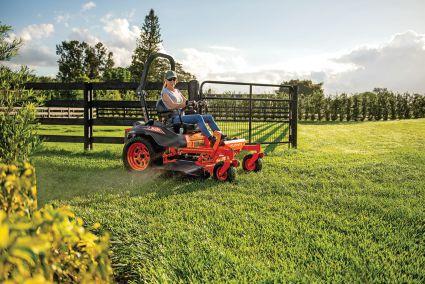

The timing of the job offer was impeccable as things weren’t going so well with Signature Sand and Soils.
“It went from zero to 100 in a matter of three years.”
The official start to his new career with the city in 2004 was a trial by fire as winter kill decimated Moncton’s sports fields.
“What a way to start a job.”
Asked what tools he required to turn the fields around, Horsman answered: an aerator, topdresser and overseeder. Funding was provided, the equipment was ordered, and the machinery remains in use two decades later.
The ice damage took its toll on 20 of 23 acres of Kentucky bluegrass.
“Once I had the tools to do the work, things when smoothly.”
Overseeing the recovery of the fields was one of the most notable challenges in his sports turf management career. But there were also happier times that rank among his career highlights. In one year alone –2010 – he was tasked with three projects of significance.
One was to prepare the infield at the University of Moncton’s stadium for the World Junior Track and Field Championships’ field events. For that international meet, he and his crew laboured marathon-length days to prepare for the championships and then worked from midnight to 6 a.m. to make the necessary field repairs following such turf-damaging events as the shot put and javelin throw.
Following the champion -

ships’ closing ceremonies, one of the U.S. coaches sought Horsman out to convey his gratitude for the quality of the field conditions.
“It was just a feeling I’ve never had before.”
Later that same season, Horsman was asked to prepare the University of Moncton’s sports stadium for a neutral site Canadian Football League game between the Toronto Argonauts and the then-named Edmonton Eskimos (now Elks). The task required the installation of synthetic turf in the end zones, for which he called upon Sports Turf Canada colleague Gord Dol for his expertise.
The CFL experience paid dividends which triggered speculation that Moncton might one day land a franchise of its own to complete an even-numbered 10-team league. A second game was played in Moncton in 2011, followed by a third in 2013, but Horsman said the enthusiastic atmosphere surrounding the first game had all but disappeared by the time the third game was played.
“The synergy had somehow gone out of it, and I felt it,” he said, adding he doesn’t think the area has the right demographics to support a CFL franchise.
Nevertheless, Horsman rates his CFL experiences and those preparing for the 2010 World Junior Track and Field Championships as his personal career highlights.
Before both events, the City of Moncton was host to a major national soccer tournament in 2006 on fields at the CN Sportsplex. Tournament officials from Ottawa visited the venue several weeks in advance of the event, noting how rough they
looked after coming out of winter. Horsman said the fields typically underwent 800 to 900 hours of use during a season, and the high volume of traffic showed.
“The tournament was in the fall, so I had all summer to get them ready and had all summer to move the fields back and forth.”
The same tournament official returned in the fall to see the results of Horsman’s handiwork, telling him, “I cannot believe what you’ve done in this amount of time. This place is the nicest facility we’ve ever played on.”
News of the fields’ transformation reached Sports Turf Canada which was then an Ontario-based organization called the Sports Turf Association. Then executive director Lee Huether reached out to Horsman to discuss the association branching outward to other parts of Canada, starting with the Maritime provinces. An association field day was scheduled for Moncton which proved to be “an unbelievable success,” drawing delegates from throughout Atlantic Canada.
Horsman took it upon himself to spread the word in Atlantic Canada about what the association offered its membership. Soon afterward, he joined the association’s board of directors to provide a voice for Atlantic Canada.
“That was a blast to open up Atlantic Canada to Sports Turf Canada. I was so fortunate to be involved in that.”
Although he stepped down from the board prior to the COVID-19 pandemic, he wishes to return.
The path that has taken him to where he is today was bumpy at times, but Horsman said hard work and tenacity paved the way to better things.
Landscapespecific software allows businesses to be better managed and more profitable
By Mike Jiggens
Tapping into modern technology – such as computer software that allows operations to be more efficient – is something more and more landscaping businesses are doing today. The means to better keep track of customers, manage the books, deal with human resources matters, and keep tabs on inventory and equipment can be achieved through specialized software.
It was an avenue Sean Cooke decided to explore upon becoming general manager at Avalon Landscapes, a commercial landscape maintenance, construction and snow removal company based in Idaho. He spoke about Avalon’s willingness to embrace technology at the 2023 Lawn & Landscape technology conference in Las Vegas.
He said that when he was hired as the company’s general manager, a change in business operations was needed. Avalon

was doing good work but made little money.
Founded in 2001, the company employs 85 people. Avalon shies away from residential work, preferring to stick with commercial properties, HOAs and hospitals. It realized $5.5 million in 2022 revenue and was projecting revenue of $6.5 million in 2023.
To improve the business and make it more profitable, he recognized five areas that needed addressing: operational efficiency, accounts management, bookkeeping and financial management, human resources, and physical resource management.
“We wanted to find platforms and solutions that addressed those,” Cooke said. “Budgeting hours and time management is a daily need we have in our business so that we’re being efficient and staying under budget.
An hour wasted a day turns into a lot of time over a year. When there are 85 people wasting an hour a day, it adds up quick.”
He said that when he joined the company, Avalon was averaging about 400 hours a week in overtime.
“It had a huge impact on the bottom line.”
Avalon has since whittled down its overtime hours to about 100 a week which, Cooke said, is “rather tolerable” considering the company employs 85 people.
By reducing its overtime hours, Avalon increased its hourly rates and allotted more time for its employees to spend with their families while still making comparable money without having to work 14 or 15-hour days.
What Cooke sought was a software platform that would support all of Avalon’s services
and departments – each of which had specific needs.
The software needed to help with quality control which included photo documentation and being able to make operational notes and those from the bidding process. Access to the software had to be available to both management and those working in the field.
The software also needed mobile capabilities.
“What good is having all of this if you can’t access it while on the job?”
It needed to be easily usable by phone and tablet, either through an app or via web access.
“We wanted to have real time visibility” and to be able to track materials and inventory. “Being able to track inventory allows us to plan better and be more efficient and be more profitable.”
On the account management side, the software desired had to keep track of customers and properties as well as upcoming projects, and to be able to do estimating. Tracking costs and hours was imperative.
The ability to invoice, collect and job cost was also paramount.
“We wanted our operation platform to sync with our accounting software and be able to match up so we could accurately keep track of our money.
We now get our invoices sent to us automatically by our vendors.”
Where overhead and direct job costs are going needed to be plotted by the software.
The platform’s ability to deal with human resources matters was just as important, Cooke said.
“Being able to automate your onboarding process, job postings and application processes is a huge time saver.”
He added it’s also beneficial if the software can send out company notifications and recognize employees who have done good jobs.
A software program that can manage inventory and track when fleet servicing is required is an asset, Cooke said.
Taking everything into con-

sideration, he said a comprehensive, landscape-specific software package was needed that would especially address necessary changes in the company’s accounting practices.
Some of the software Avalon looked at didn’t properly communicate with its accounting program. What was needed was something that allowed the company to have better visibility between its management software and its accounting software and to be able to communicate regularly.
“We had to implement one while we were implementing the other. That was a real challenge.”
In January 2023, Avalon rolled out its new human resources platform and went live with its management and ac-


counting software simultaneously the following March. In May, the company’s GPS and fleet management solution was enacted.
Each member of the team must become involved in the company’s new technological direction, Cooke said.
“They all have to buy into this work to be successful because they all have to use it. If you do all this great stuff and only half the people use it, it’s really more detrimental than beneficial.”
Cooke advised that when a company decides on a program it likes, it must ensure it gets what it signed up for and that the integration of the software includes each of the company’s processes and service lines,

such as lawn maintenance, snow removal and tree care. Services lines are different. Maintenance involves year-long contracts as companies understand their mowing frequencies, but construction contracts tend to be shorter term. It makes the billing process different between the two services. Learning how to set up construction projects inside a company’s software is critical, he said.
“You have to make sure you can change something if you make a mistake. Make sure you have the ability to do that. You want to make sure that if you make mistakes, they’re not set in stone.”
Cooke said knowing the needs of the company and each of its departments is the first step toward executing a plan.





Properly managed soil supports biodiversity, cleans the water, and leads to greater productivity and a healthier economy
By Mike Jiggens
Paying mindful attention to the soil in landscaping, gardening and agriculture is an effective means of tackling climate change in a variety of ways, including carbon sequestration, water conservation, reduced inputs and improved nutrition.
Representatives of the Compost Council of Canada shared some of the best practices for recruiting soil to tackle climate change at January’s Landscape Congress conference in Toronto.
“Soil is a four-letter word for hope,” Susan Antler, executive director of the Compost Council of Canada, said. “Soil is a fight for the best possible life on earth. For those in the industry who manage soil, this is our ally.”
Properly managed soil supports biodiversity, cleans the water, and leads to greater productivity and a healthier economy, she said, adding more attention must be focused on organics.
Organic material accounts for
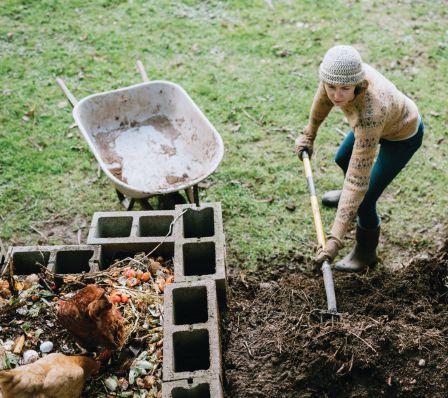
about 40 per cent of the waste stream. Much of it “thoughtlessly” goes into landfills and contributes to climate change.
“When you put organics in a landfill, it basically is a tomb, and it’s the organics that result in methane being produced,” Antler said, noting the gas is about 80 times more powerful than carbon dioxide and greenhouse gases.
Landfills are the No. 2 emitter of methane in Canada, “and it’s needless.”
Antler was one of the founding members of the Compost Council of Canada in 1991 at a time when garbage-laden barges traveled northward along North America’s Atlantic coast, looking for a port willing to accept the loads.
She said organics in the form of food waste, biosolids, pulp and paper, and other materials can be diverted from landfills to soils where it can be empowered.
The Compost Council of Canada is
a national advocacy and infrastructure development organization which is dedicated to advancing organic recycling and the return of organic matter to the soil for ongoing health and vitality. The organization also serves as a frontline offence and defence to climate change and resiliency.
The council recently partnered with the Soil Conservation Council of Canada on a two-year study in which Canadian soil scientists explored the relationship between soil and tackling climate change.
Antler said the tendency is to look at soil from a surface perspective, but what lies underground needs to be the focus.
Glenn Munroe, manager of special projects for the Compost Council of Canada, said the organisms found in compost are the same as those found in soil, but noted compost tends to be richer in those organisms. Microbes cluster around the roots of plants.
Fungi and bacteria are found everywhere in soil, and predatory protozoa consume the nutrient-rich bacteria and “poop out” the nutrients at the roots of plants. Munroe said as plants put out sugars to their roots, they attract bacteria and fungi. Microbes consume them and release nutrients in a plant-available form in the root zone.
“This is probably the biggest factor involved in the nutrition of whatever it is that’s being grown,” he said.
Antler cited the “six Cs” of good soil management: reducing soil compaction, cultivating carefully, continuous living plant cover, using cover crops, adopting crop and plant diversity, and using compost and other soil amendments.
“These six Cs have to be incorporated as it works well for those who are embarking
on soil health,” she said.
Pushing organic matter deeper into the soil is a means to store carbon and a way to fight climate change, and can be achieved through the adoption of soil health practices and principles, incorporating them properly and continually monitoring them, she said.
A good, healthy shovelful of soil should contain between six and 10 earthworms, Antler added.
Cost-efficiency, marketing and sustainability are three good reasons for people to care about soil health, Munroe said.
Although costlier at the outset, adoption of the six Cs becomes less expensive over time, he added. There are more upfront costs in the beginning, but after two or three years the practice becomes more cost effective.

It’s easier for a landscaping company to market itself as being “green” if it adopts the six Cs toward better soil health. The Compost Council of Canada has signage available to those who use compost on lawns. The signs provide a good marketing tool for practitioners of healthy soils.
Other marketable features of healthy soils are that they’re resilient, are drought resistant, are less prone to flooding and are non-polluting.
Because healthy soils require fewer inputs – including water – sustainability is achieved.
“As your soil improves, input requirements are reduced,” Munroe said, adding


Breathable – Does your turf cover allow for proper air / water flow?
Efficient – Does your turf cover have Smart Edge technology, reducing the need for extra grommets/hemmed edges?
greater use of fertilizers and crop protection products are necessary when soil health is poor.
“Because healthy soils have a better structure, they hold more water,” he said. “They allow more water to penetrate rather than run off which is another cost saving. And, in the long run, they require less labour.”
A healthy soil is one that hosts a thriving soil food web with different creatures consuming different creatures. The greater the diversity, the healthier the soil will be, Munroe said.
He noted a Harvard University study was conducted between 2004 and 2009 during which the institution wanted to initiate an organic system for its campus grounds. The health and aesthetics of the university’s grounds had previously posed a challenge. Soil testing was conducted to see what biodiversity existed in the soil. It was decided to build the soil’s health with compost and compost tea.
Irrigation requirements were subsequently reduced by 30 to 50 per cent over the course of the study while the turf’s root systems increased in depth by three to five inches. Disease and weed pressures were noticeably reduced, and an overall cost savings was realized.
Harvard staff were trained to make their own compost and compost tea.
Munroe said lawns sequester an average of one to 1½ tons of carbon per hectare per year.
“Grass is a wonderful carbon sequester, but it has to be managed properly,” he said.
LEVELS OF COVER FOR ALL BUDGETS
Ease of Use – Is your cover lightweight, and manufactured in one piece?
Peace of Mind – Does your turf cover offer the best warranty, from a company with over 35 years of experience?
Durability – Can your turf cover withstand harsh winters, while offering quick germination and easy maintenance?

By Dr. Sara Stricker & Dr. Katerina Jordan
You might think you know your local landscape like the back of your hand, but have you been listening to what the plants are telling you? Amidst our daily turf management tasks of mowing, watering, and fertilizing, there’s a subtle language being spoken – one that often goes unnoticed but holds valuable insights into what is happening within the ecosystems.
We call this language plant phenology; the timing of plant lifecycle events such as budding, flowering, and fruiting. There is an intricate relationship between turfgrass insect pests and environmental conditions, and we can use the silent cues that nature provides to better protect our turf.
Plant phenology serves as a reliable indicator of environmental conditions and biological processes. From the emergence of buds in spring to the shedding of leaves in autumn, each phase of a plant’s lifecycle reflects the interaction of temperature, moisture, and daylight hours. By observing these subtle shifts, we gain a deeper understanding of the rhythm of nature and the ecological dynamics at play.
In the context of turfgrass management, plant phenology offers valuable insights into the timing and intensity of insect pest activity. By paying attention to these phenological cues, caretakers can anticipate pest outbreaks, implement preventive measures, and minimize the impact on turfgrass health. Think of it as your crystal ball for predicting insects!
Several insect pests pose significant challenges to

turfgrass health, each exhibiting distinct phenological patterns that coincide with specific stages of plant development. For instance, the lifecycle of white grubs – the larval stage of various scarab beetles – can be predicted using plant phenology.
One indicator for the emergence of Japanese beetle adults is that the morning glories and linden tree have begun to bloom. As these beetles lay eggs in the soil, their offspring hatch and begin feeding on turfgrass roots, reaching peak activity during the warm summer months. If you see plenty of adult beetles, you know that the white grub infestation is coming soon after.

Humic Coated Ammonium Sulfate (HCAS™) is the latest innovation to join our premium line of humic-coated fertility products.
Utilizing proprietary CarbonCoat™ Technology to produce clean, spherical, free-flowing granules bonded with potassium humate, HCAS (20-0-0-23S) is an ideal nitrogen source for the cooler months of the growing season and is complementary to Humic Coated Urea (HCU®) applications in the warmer months of the growing season.
Learn more at AndersonsPro.com
@TheAndersonsPro | AndersonsPro

Likewise, the lifecycle of the European chafer beetle can be predicted by the blooming of Vanhoutte spirea, which indicate when the larvae are going into the pupal stage. Aeration and removing excessive thatch can improve the overall health of your turf, and there are several biocontrol products containing beneficial nematodes, bacteria, or bacteria which are sold for the control of white grubs. To maximize the efficacy of a biocontrol product, always read the label carefully, and reapply as recommended. The best time to target white grubs is when they are small – so we can listen to the local plant for the reminder notifications they are sending! Set your clocks: approximately four weeks after linden tree bloom is a good time to target white grubs. But if the Vanhoutte spirea has begun to bloom, then you’ve probably missed your chance to manage white grubs for this season. Rescue missions in early spring and late fall when the grubs are large and causing intense damage is often frustrat-

ing and can make you feel hopeless. Understanding the lifecycle of this pest and using our tools with precision is the best management practice.
Another example is how you can predict the onslaught from hairy chinch bug by looking for birds’ foot trefoil. These yellow flowers typically pop up at the same of time of year that most of the chinch eggs have hatched, so you can start your scouting efforts for the first nymphs. Identifying pests early enables prompt intervention before

they cause significant damage to the turfgrass. Some management recommendations for chinch include raising the height of cut, watering deeply, and check your local legislature to see if the biocontrol containing <i>Beauvaria bassiana</i> is available in your region.
Forsythia blooming in early spring is a nice reminder for us to put down our spring fertilizers. It also talks to the golf course superintendents; these yellow blooms signal the migration of annual bluegrass weevil. The overwintering adults will emerge and begin their march towards fairways and greens, where they will mate and lay eggs. When the Forsythia flower petals have dropped, this is when the larvae have begun to feed, and the damage will soon be evident. This signal is a cue to turf managers to put down an insecticide which will target the early life stages of the pest.
By monitoring plant phenology and understanding the lifecycles of these pests, caretakers can implement targeted control measures at critical stages, reducing the need for rescue interventions. And if you find yourself in a situation where you do not have any of the indicator plants mentioned, you can do one of two things: you can plant them on your site so that you have those little reminders, or you can try to observe other plants that are blooming near your turf when you first notice the presence of various species of insects and then look for those phenological indicators each year.
Overall, fostering healthy turfgrass ecosystems through proper cultural practices such as soil aeration, irrigation management, and overseeding will enhance plant resilience and reduce susceptibility to insect pests.
And remember to listen to what the plants are saying! In our local landscapes, we need to keep our head on a swivel to look for and decode the silent cues being sent to us from the nearby plants. By listening attentively to the language of plant phenology, we can gain valuable insights into the timing and intensity of insect pest activity, empowering us to implement proactive and sustainable management practices.

Landscaping equipment is being tailored to address shortages of skilled labourers
By Joe Haynes
The current labour shortage heavily affects construction and landscaping projects across the country. In the wake of the COVID-19 pandemic, employees between the ages of 55 and 70 in the construction industry planned to retire early. With difficulties drawing the younger generations into manual labour positions, contractors need to consider how their equipment can help fill in the gaps as they work on managing crew size. In these challenging circumstances, innovative
equipment design provides an effective solution to maximizing a crew’s productivity without sacrificing safety. In the compact earth drill market, contractors are seeing success with efficient, durable and safe equipment like torque-free one-person earth drills that reduce labour costs and increase productivity.
While labour shortages affect everyone, smaller crews obviously feel the effects more keenly than their larger counterparts. When smaller crews have difficulty filling positions, the need to accomplish work with fewer people is no longer a luxury but a necessity. Earth drilling is one area that offers the opportunity to help a crew be more efficient. While fast and powerful earth drills were once only thought to be safely operated with two crew members, the loss of one more set of hands on the jobsite is no longer acceptable.
One-man drilling is an often-overlooked way to increase crew availability by freeing up that second
operator. It’s true that equipment-powered earth drill attachments, like those that are available for skid steers and compact utility loaders, allow drilling with a single operator, but at the expense of efficiency, manoeuvrability and jobsite logistics, not to mention the initial equipment investment. However, industry-leading earth drill designs provide a cost-effective, safe
and efficient way to reduce labour requirements in earth drilling applications.
The invention of torque-free mechanical and hydraulic earth drills created a safe, productive alternative to two-man drills and larger compact equipment with earth drill attachments. These units allow a single operator to safely accomplish highspeed drilling at a steady 360 rpm. A

69-inch-long (1.75-metre-long) steel torque tube connects the drill’s handle to the unit’s engine where it’s mounted on a separate carrier. If the auger hits an obstacle, the drill’s torque and kickback transfer to the engine carrier rather than the operator, making true one-man drilling safe and effective.
The Reist 3PH mounted or towable AeraSeeder is the ideal tool for the discerning professional who demands quality in groundskeeping. Ideal for all experience levels this unit provides optimal seeding in just 3 steps. Creates perforations for optimizing seed contact with the ground increasing germination.
Towable and hitch-mounted earth drills provide additional single-operator drilling options. Many models feature a “teeter-totter” design with wheels incorporated near the centre that offset the weight of the machine by the engine. The user-friendly design reduces physical pushdown force and cuts operating weight by as much as 50 per cent over traditional earth drills, allowing older workers to manoeuvre the drill without risking injury. While ease of operation is key for reducing worksite injuries, it shouldn’t come at the expense of power. Drills clearly need to operate with high torque to maximize productivity, but if that torque transfers to the operator, it can take a significant toll on their body. For even greater productivity and safety, the frames of these towable and hitch-mounted drills absorb drilling torque, keeping the operator in complete control of the drill without worrying about kickback.
Some also feature a variable auger tilt to allow for vertical drilling on uneven terrain, such as hills. This greatly reduces operator strain and the strength needed to control the drill. By tilting the drill to offset the slope, the operator remains level and simply adjusts the auger to the desired position, protecting against injury.
Contractors know that on-the-job accidents remain common in manual labour professions. Keeping employees safe and healthy protects against additional worker shortages; and, while on-site safety isn’t a new concern, contractors should consider the safety features of equipment they’re using.
Some safety features aren’t available on all earth drills on the market. Some machines offer safeguards to prevent hazard-
ous conditions when drilling, especially when it comes to one-man drilling.
There are two typical designs for engine mounts: handle-mounted and chassis-mounted. A chassis-mounted unit sits a few feet away from the drilling site and protects operators from breathing in any harmful emissions.
Kickback on traditional earth drills jars the entire drill, sometimes resulting in injury to the operator, including finger, hand and arm injuries. As mentioned earlier, steel torque tubes protect operators from kickback on some mechanical and hydraulic earth drills. Earth drills without a control system require operators to use
extra effort to control the drill and, with time, the effort will take a toll on their bodies.
The torque tube reduces fatigue and physical stress that can lead to back problems and muscle strains.
Beyond features that negate kickback, earth drill manufacturers offer a variety of safety features for each type of drill they offer. For hydraulic units, look for a pressure relief valve. The valve engages when the drill reaches a predetermined hydraulic pressure. It stops the auger rotation before the drill can reach the overload point. Similarly, look for mechanical earth drills built with a centrifugal clutch. If the auger

encounters an object beneath the surface or if it’s overloaded, the clutch automatically slips to protect the operator from serious injury.
Safety features such as these can help keep crews fully staffed when labour shortages hit. By minimizing physical stress on operators, these drills help reduce the likelihood of injuries and keep crews safe and healthy on the job.
It’s no secret that it’s difficult to find people willing to do manual labour, especially in the aftermath of the pandemic. As retirement and a shrinking workforce continue to affect contractors, more equipment options are necessary to provide an ideal solution for each business’ challenges. Efficient, durable and safe one-person earth drilling equipment is an effective way to work smarter and not harder in the wake of labour shortages.
This highly practical guide covers the full complement of tools green industry professionals need to create a successful environmental program on golf courses and grounds. The Environmental Stewardship Toolkit offers a comprehensive analysis of all relevant issues, including environmental management, resource management, community engagement, and document management.
The emphasis throughout is on the development of programs that are both sustainable and practical, combining the protection and renewal of environmental systems with a workable business plan. Regulatory issues as well as concerns of owners, customers, and the community at large are also addressed.
| Item #0470635162


By CCOHS
The Canadian Centre for Occupational Health and Safety (CCOHS) promotes the total well being of workers in Canada by providing information, training, education, systems and solutions that support health and safety programs and injury and illness prevention. www.ccohs.ca
Maintaining and promoting health and safety in the workplace is important throughout the employee journey. Whether you have new workers or seasoned professionals on hand, training (and retraining) is a key tool that can help everyone work safely.
However, that’s just one piece of the puzzle. In addition to training, employers must abide by several occupational health and safety responsibilities. Many of these elements, worker rights and employer responsibilities, are similar across jurisdictions in Canada. However, the specifics around occupational health and safety legislation and how these laws are enforced can vary from one jurisdiction to another.
Workers also have health and safety responsibilities. They must work in compliance with occupational health and safety legislation, and use personal protective equipment and clothing as directed by the employer. They also must use the prescribed safety equipment, and report workplace hazards and dangers to their supervisor or employer.
To carry out their responsibilities, workers need to know what these responsibilities are, and that’s where managers, supervisors and employers come in.
Managers and supervisors are required by law to take every reasonable precaution to protect their workers, and they must ensure that workers are

performing their jobs safely and are following occupational health and safety legislation. This means that workers need to be trained on potential and actual hazards associated with their job, provided with written instructions on the measures and procedures taken to protect them, and use all appropriate personal protective equipment and devices.
Here are some ways you can implement health and safety measures at work.
A health and safety program is a requirement in any workplace, and having a written policy is key to its success. Think of a policy as a plan of action. It indicates the degree of the employer’s commitment to health and safety and should reflect the special needs of your workplace. The policy should also be provided in written form in the language of staff so that it’s readily understood by every worker. It should be positive in tone (for example, focus on what the worker should do rather than what they should not do), and peri-
odically reviewed to evaluate its effectiveness.
The policy should be signed by the most senior person in the organization. It should include items and statements such as the employer’s duty to give health and safety education and training to all employees, the development and maintenance of health and safety roles and procedures, compliance with occupational health and safety legislation, continuous improvement, and planned programs that support the commitment to workers’ health. It should make clear that co-operation from all employees is vital to the success of the health and safety policy and they should be actively involved in the workplace and regular workplace duties and actions. And lastly, it’s important to communicate the policy with everyone to ensure all employees understand their rights and responsibilities.
Most workplaces are legally required to have a health and safety committee or representative. Among other responsibil-
ities, their role is to recognize and evaluate workplace hazards and participate in the development and implementation of programs to protect employees’ safety and health. They also respond to employee concerns and suggestions about safety and health and can create and promote programs to improve employee training and education.
To help identify hazards in your workplace, perform risk assessments of specific job tasks. During this process it is important to consult with the health and safety committee or representative, workers that perform the tasks being evaluated, and supervisors. Once the hazards and risks have been identified, determine the appropriate control measures needed to protect workers. When selecting control measures, consider the hierarchy of controls, which includes, in order of effectiveness, elimination/substitution controls, engineering controls, administrative controls, and personal protective equipment. Risk assessments will also help identify the specific training needs of your workers.
Worker safety isn’t just one tip, tool, or training process. It’s a journey. And just like any journey, there are many different routes you can take. But no matter which way you go, don’t go it alone.

































Peak power for 10 sec Continuous power












The era of batteries chasing gas engines is over. Now, it’s their turn to try and catch up with Kress.


At just 8 minutes, batteries power up faster than they wind down. Even better, they charge on the go—no AC outlet in the field needed.




Guaranteed for 3,000 cycles, Kress 8-minute are the only batteries to outsave two-stroke mix. Extreme longevity








Elevate your bottom line with the only system that delivers substantial savings over gas. Pro landscapers










Your only choice to replace gas






Our exclusive MAXOUT® Technology, available on ECHO X Series 56V tools, ensures the unit operates like a gas-powered tool.
Using eCM Technology®, our 56V battery management system controls the temperature, charge and discharge to help prolong the life of the battery pack. ®

JOIN THE MOST POWERFUL LANDSCAPER FLEET PROGRAM.
Save 20% on gas & battery equipment for 24-months*
